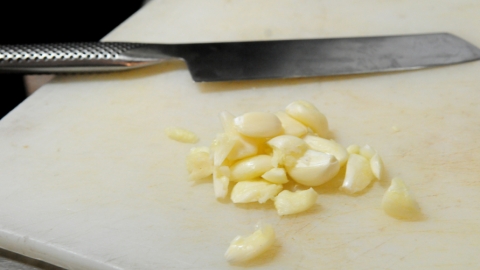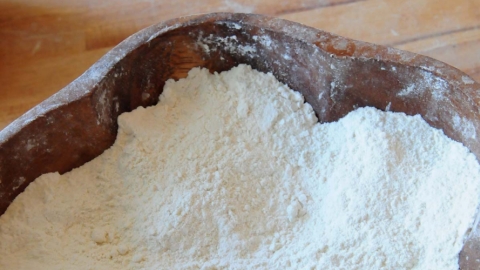Peppercorns
Whole, cracked or ground pepper adds a dash of health to any meal
Pepper is one of the most commonly used kitchen spices, and an essential staple in the spice cabinet.
Black Pepper (Piper nigrum) is a plant from the Piperaceae family and grows natively in India and other tropical regions. The plant produces a fruit that’s dried and later used as the spice we all know. Though black pepper is what you’ll likely see in the spice aisle, you may have seen other versions of a colorful hue.
“Black peppercorns are the ripe, dried fruit, but there are white and green peppercorns too,” says Nicole Piazza, a registered dietitian and owner of The Clean Plate Kitchen in Clinton. “Green peppercorns are dried, unripe berries, and white peppercorns are the dried ripe fruit that have been peeled of their skin.”
Piazza explains pink peppercorns are actually from a different plant family altogether, but often get put into pepper medleys to add a festive touch.
“Pink peppercorns are actually from the cashew family—they are not a true peppercorn,” says Piazza. “If you have a nut allergy, this is something to consider.”
As far as a difference in taste, each has a unique profile.
“Black pepper is the strongest. White is the most mild, and green peppercorns are more earthy—they have a tangy taste with less of a bite,” she says. Green peppercorns have a shorter shelf life and should be used shortly after purchase, especially as they may have been long in transit.
“Since peppercorns typically come from India, it’s best to buy whole peppercorns and grind them when you’re ready to use them,” Piazza advises. “Pepper that’s already been ground oxidizes quicker and can be less potent.”
Because they are abundant in India, they are often used in the practice of Ayurdeva, an ancient method of natural health.
“Pepper has been used for centuries in Ayurvedic medicine,” says Pari Mudiginty, co-founder of Ayurvedashram, an holistic wellness center in North Brunswick. “It’s used to rid excess phlegm accumulation in the body, which can help alleviate symptoms of asthma and bronchitis.”
The heat present in pepper also has a positive effect.
“It is pungent and sharp in taste, and hot in potency, and these attributes help it penetrate the subtle channels in the body, making it good for aiding in circulation and flushing out toxins,” she says.
“It’s also used to increase digestive fire to help those with irregular digestion or [who] suffer from loss of appetite. It’s also used postpartum to help reduce bloating, and is commonly used to treat coughs and colds.”
Mudiginty explains that pepper is a frequent ingredient used in Ayurvedic cold care.
“It clears out the toxins (or ama), and is one of the main ingredients of trikatu—an herbal blend that’s commonly prescribed in Ayurveda for cough, cold and digestion that’s made of peppercorn, Indian long pepper and ginger,” she says.
Mudiginty adds that two grams daily (about five peppercorns) is recommended if you want to rid a cold. “Pepper is very versatile,” she says. “You can grind fresh peppercorns into soups, salads or add it to your favorite tea.”
As far as its nutritional profile, pepper adds a little extra kick.
“Black pepper is a source of manganese and vitamin K, but you really have to consume a lot of pepper to get any significant amount of minerals, vitamins or nutrients,” says Dr. Diane Rigassio Radler of Rutgers University School of Health Professions in Newark. “You’re better off having legumes or leafy vegetables to get worthwhile sources of those nutrients.”
However, something unique happens when pepper teams up with turmeric.
“Pink peppercorns are actually from the cashew family—they are not a true peppercorn. If you have a nut allergy, this is something to consider.”
—Nicole Piazza, registered dietitian and owner of The Clean Plate Kitchen, Clinton
“There is evidence that suggests black pepper helps enhance the absorption of the curcumin found in turmeric,” says Radler. “Curcumin is a powerful antioxidant that has anti-inflammatory benefits as well.”
While pepper may be lacking as a significant source of vitamins and minerals, it’s a healthy choice when it comes to adding flavor to food.
“Using the natural spiciness of pepper instead of salt to flavor a meal or in place of condiments with hidden sodium is a good way to reduce your intake,” she says, adding that too much sodium in the diet is something that should be avoided.
It’s worth noting that the heat in pepper comes from a compound called piperine, which is the same heat found in hot peppers.
“If you handle peppercorns and then touch your face or eyes, you may feel a mild burning sensation,” says Radler. “That’s because piperine is an irritant to mucus membranes, and is also why ground pepper can make you sneeze.”
So, go with the grind. With the chilly temperatures upon us, adding a little extra pepper to your winter meals can not only warm you up, but also help to keep cold season at bay.









